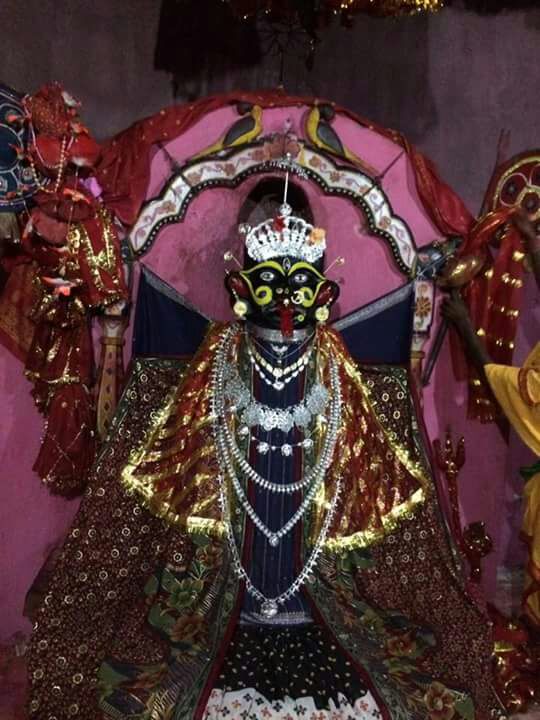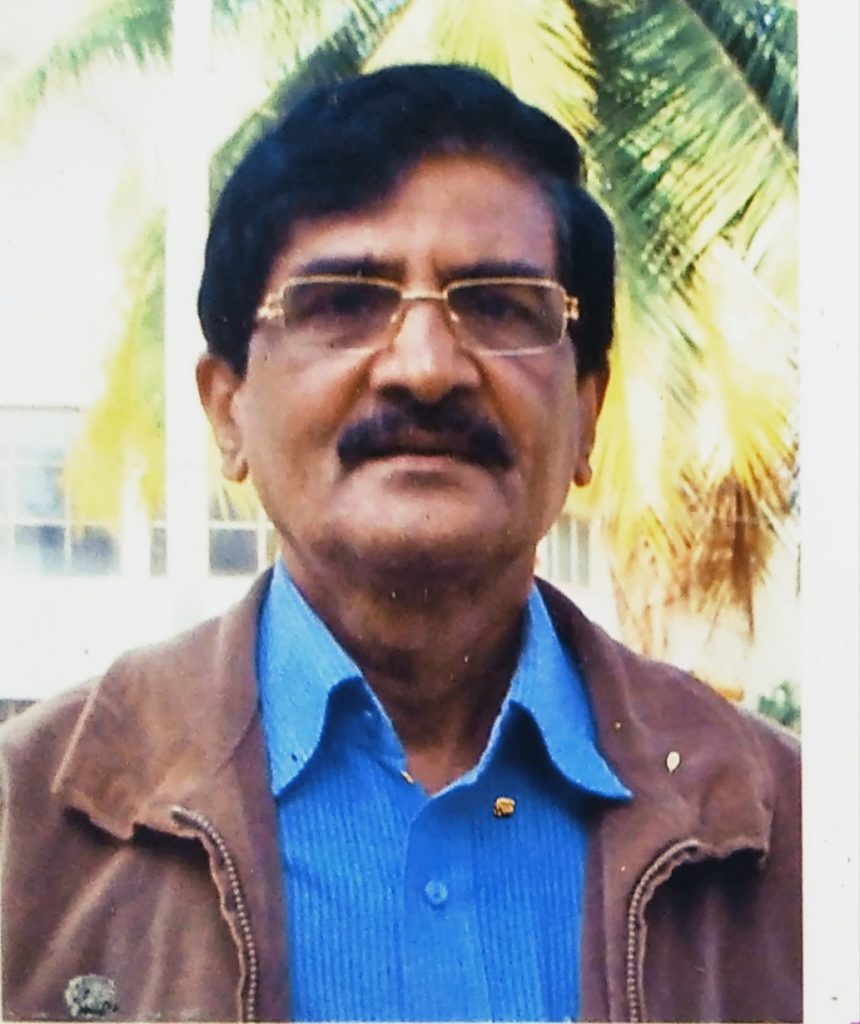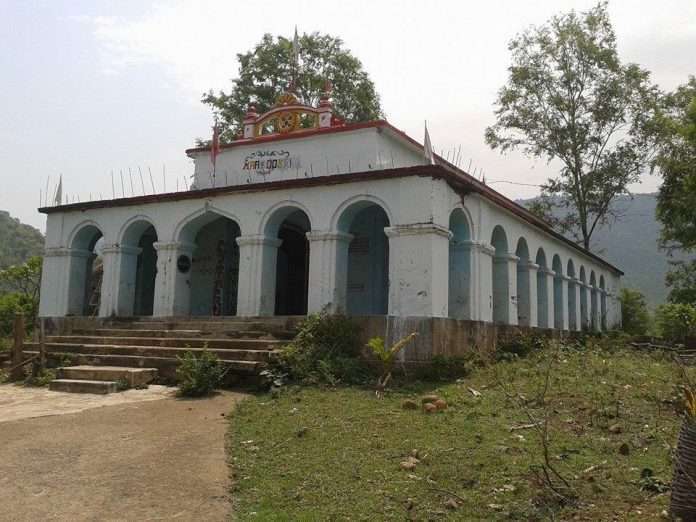Tribal dominated Kalahandi is famous for Sakti worship, where for cosmic well-being worship of mother goddess in different forms is practiced. Tribal people being nature lovers worship their deities as protectress and symbol of fertility through wooden slabs or stones.
They conceive the presence of God and mother goddess in all formats of nature from mountain to tree. One of the earliest forms of Shakti worship was also practiced in Kalahandi region in the shape of Stambeswari and the earliest shakti temple ruin of Odisha discovered from the ruins of historical Asurgarh was dedicated to Stambeswari.
In the process of universalisation there was gradual assimilation of Tribal and Non-Tribal culture and many forms of Shakti worship practiced with traditional rituals. Influence of tribal culture in the Vedic goddesses and vice versa is noticed.
Through this assimilation process, we can find the worship of several forms of mother deities in Kalahandi like Manikeswari, Dokri, Lankeswari, Danteswari, Stambeswari, Sakambari, Maili, Satbaheni, Kali, KaliSundari. It is a nice example of unification amidst cultural diversity.
‘Dokri temple’ of Talgud of Kalahandi is located 8 kms from Jaipatna in the lap of nature, is an important Shakti Pitha. The temple is facing north, the Saptamukhi Mountain in the East and Chanchangad stream in the South west side. Literally Dokri means ‘Old Lady’.
Many legends and folklore are associated with her origin. According to a popular legend long back one Tribal lady named Lalsuta belonging to the Parja tribe had been to the forest to collect roots to feed her children. While digging earth by an iron object it struck a hard object and her body was shocked.
She found blood oozing out from a stone lying under the earth. The spot is at Tatelipada near Badchatrang under Thuamul Rampur block. Saptamukhi Mountain believed to be of Ganga period. Lalsuta, the Parja lady brought itto the notice of Mahulpatna Zamindar who was of Naga dynasty.
By the direction of the deity through a dream the zamindar brought the stone which was a natural phallus like but a shapeless one to Talgud earlier known as Talagada with reverence and placed her there near the Chanchangad stream in a thatched house.
Another variation in the legend however says that Lalsuta handed over the stone to the Ganga king of Thungigada and was received by him as a tutelary goddess. But later after the fall of the Ganga king and Thungigada, the Mahulpatna Zamindar of the Naga dynasty brought the deity to Jaipatna but the deity refused to move beyond the Chanchangad stream. Ever since the Zamindar has accepted Dokri as his tutelary deity.
Later the zamindar shifted his capital to Jaipatna and in the 1st quarter of 20th century a pucca temple was constructed by the descendent of the zamindar and arrangement was made for the regular puja and rituals of the deity.
Dokri Devi is worshipped through tribal and non-tribal customs and there is a happy blending of both the cultures. Besides regular puja on each Tuesdays, Baliyatra, and Chaitapaarva are performed by the priest belonging to the Paik caste and mafi land was provided to this priest family of Talguda by the zamindar for the services. During the Dusahara festival the Brahmin priest and the descendants of the Parja lady, Lalsuta does the rituals.
Besides at Talgud, Dokri Devi is worshipped in different villages of Kalahandi district particularly in Dharamgarh sub division. There is also a temple dedicated to her in the palace premises of Madanpur Rampur Zamindar and besides Dokri she is also called as Dakeswari and worshipped by Brahmin priests in Tantric method. She is also worshipped in the tourist spot DokriChanchara and in ‘Her’name the place and the famous water fall of Dokri Chanchara is named.

Dasahara festival and Lathiyatra
The deity Dokri is placed in the sanctum sanctorum of the temple in the original shapeless stone form. In front of this stone there is an altar with a post like concrete structure. The Bhairava of the deity is Budharaja. The Dasahara festival of Dokri is held from 1st day of Aswina Sukla till Nabami.
Before it from Bamana Dwadasi to GajaSasthi, the fertility rite Baliyatra is observed, where seeds of 16 types of pulses are germinated in the sand in front of the deity. A fortnight before Dasahara the Zamindar’sdescendents invite the priest, descendant of the Paraja family,Naria, paik and other deities of the locality.
It is known as zuzura. On pratipada a new earthen head for the deity is prepared and is fixed in the post like structure in the altar and dressed with clothing and ornaments through secret rituals. During Dasahara the Brahmin Priest worships the deity in Banadurga form in Tantric rituals with the assistance of Brahma, pustakacharya and Swastibachaka.
On the other hand, the Paraja tribe representatives also perform other rituals according to their tradition. The most important function is held on Mahastami. On that day the ceremonial symbolic bamboo Lathi is brought to the temple from different local deities in a procession covering a distance of 18 kms.
The important centers from where the ceremonial Lathis are brought are from BudhipadrenPitha of Banner, Dokri of Jaipatna, Ma Bhandarghareien of Mahipani, Khaliabhaten of Khaliabhata, and Khambeswari of Karanjiguda.
All these deities are incidentally having tribal origin. In different places the lathis of different deities join with the Lathi procession of Budhipadren of Banner enroute and the procession with the beating of folk musical instruments, Nisan, Dhol and Mahuri turn into a thrilling one.
After the arrival of the Lathi procession, there used to be sacrificed by devotees as a mark of the fulfillment of their wishes. After completion of the secret tantric rituals on Maha Nabami the earthen head of the deity is secretly removed and immersed in the deep water of Chanchangadstream. On this occasion, thousands of devotees from different parts of the district as well from neighbouring districts and state congregate.
Dokri Devi is revered by the devotees and all good work in the region begins with her worship. People respect and love her as a grand old lady and treat her as a harbinger of fortune.
(The views expressed are the writer’s own)

Uma Shankar Kar, A senior Journalist, and scholar.
Bhawanipatna , Kalahandi
You can reach him at: [email protected]

